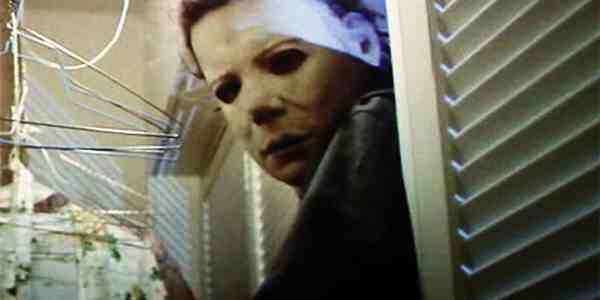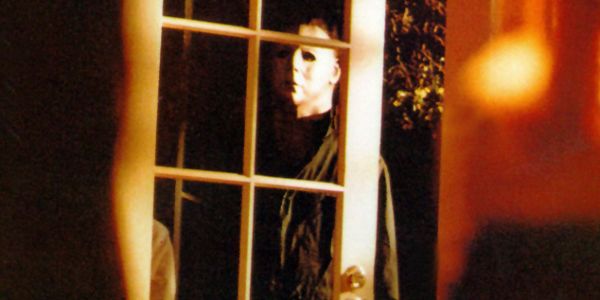The Horror Of Enclosed Space & Background In HALLOWEEN (1978)

Zac Hestand earned a BA in Film from the University…
Another October has arrived and for many of us it is time to celebrate another year of Halloween. Many sites put up lists of scariest movies of all time, or of the last ten to twenty years. For those like myself, this month marks a time of movie watching traditions. Every October, I watch the original Halloween.
There are other films I make sure to watch every October (John Carpenter, my favorite director.
Halloween is not the scariest movie ever made. Decades of slasher films have desensitized viewers on the film that spawned the enormously popular sub-genre, even though it is not the first slasher film. What the film contains, however, are elements that build tension in subtle and unnerving ways. With that Carpenter touch, the film uses enclosed spaces and action in the background to build tension.
*If you have not watched the original, the following below might contain spoilers. You’ve been warned.*
The Town as an Enclosed Space
With the exception of the few scenes set in the mental asylum and the roadside, all of the action takes place in the town of Haddonfield, IL. In the neighborhoods, and most importantly, the houses. Many scenes involve characters trapped in a house with a masked intruder, an intruder we don’t know what is capable of.

As a Western enthusiast, Carpenter uses the genre trope of the mysterious stranger that comes to town and the stranger turns the town upside down. Though known to Dr. Loomis, nobody in Haddonfield knows who Michael Myers is, or what he is capable of. Myers is the mysterious stranger that comes to town and brings death and destruction on Halloween night. He takes over the town and houses. Not knowing what he will do adds anticipation for the viewer.
As Myers arrives in town, he appears by the school and driving down the street. His enclosed space begins as a large area. Through the progression of the film, his area becomes smaller and smaller. The chases begin to become almost claustrophobic, generating an increased heartbeat with viewers on whether the victims will escape. We cheer every time Laurie makes an attack and gasp when Myers shows back up.
Background Action
Halloween, like all movies, show action in the foreground. We see middle or close-up shots of characters engaged in conversation and all seems well. However, what is that going on far away? The image is small, but as viewers, our attention shifts away from the action in the foreground to what is happening in the background or in the distance.

By showing action too far for the character in the foreground to hear or see, they are not aware. As audience members, we are. We shout at the screen, close our eyes and mutter to ourselves on what might or might not happen. Toward the end of the film, Laurie thinks she knocked out Myers. She then catches her breath, but Myers slowly rises up without a sound in the background. The audience knows this, but Laurie does not. I can only imagine the original reaction to this scene from 1978 audiences.
Another instance includes when Laurie and her friends are walking home from school. We see a huge hedge far away, and the tiny figure by it is Myers, who then moves sideways behind the hedge. A friend of Laurie’s goes to investigate, but Myers is gone, without a sound. Myers continues his tiny figure business when there’s a shot of a house, but just off to the side we see him carrying a dead body.
Music to Assist the Tension
To heighten the film’s tension with its emphasis on background and enclosed spaces is the score. Horror and thrillers, unlike other genres, benefit from great music to help establish the overall mood of the film and to create that anticipation of what might happen next. Carpenter creates an iconic and instantly recognizable score that is as much part of the film’s identity as Michael Myers.

Bernard Herrmann used those high pitched strings whenever Norman Bates made a kill and John Williams used a quieter, deeper sound for the shark in Jaws. Carpenter went the keyboard route, an instrument not often used in film during the time, and created a distinct, and eerie, sound to accompany his masked killer.
When the spaces get tight, or when we see Myers in the distance with that blank stare, the music starts. Carpenter plays the theme during the opening credits as well, to give a sample that what we’re about to see is something special. Once Myers dies, we see that his body disappears and the music plays. He is still out there, and we are left with a film where the bad guy gets away and the heroes are traumatized.
Halloween: Final Thoughts
Next year will be the 40th anniversary of Halloween, and a 2018 reboot called, well, Halloween, will be released. Whether the reboot captures the spirit of the original is yet to be seen. It goes without saying that it should be at least slightly better than that horrible Rob Zombie remake.
Halloween continues to entertain with its enclosed spaces and creepy background action with that distinct music accompaniment. It has inspired other films, most notably 2014’s It Follows. Listen to its hypnotic score and find that scene with the old woman (she starts very far in the background, and moves closer to the foreground with a blank stare). It Follows, well, follows the blueprint of the Carpenter classic.
With the holiday around the corner, put this on the list and prepare for an evening of tension building entertainment. Pair it with any other holiday favorites you may have.
Do you like Halloween? Is the film successful in building tension with enclosed spaces? Please leave a comment below.
Does content like this matter to you?
Become a Member and support film journalism. Unlock access to all of Film Inquiry`s great articles. Join a community of like-minded readers who are passionate about cinema - get access to our private members Network, give back to independent filmmakers, and more.
Zac Hestand earned a BA in Film from the University of Nevada Las Vegas, and MA in English from the University of Sheffield. He is currently at work on his first book.













